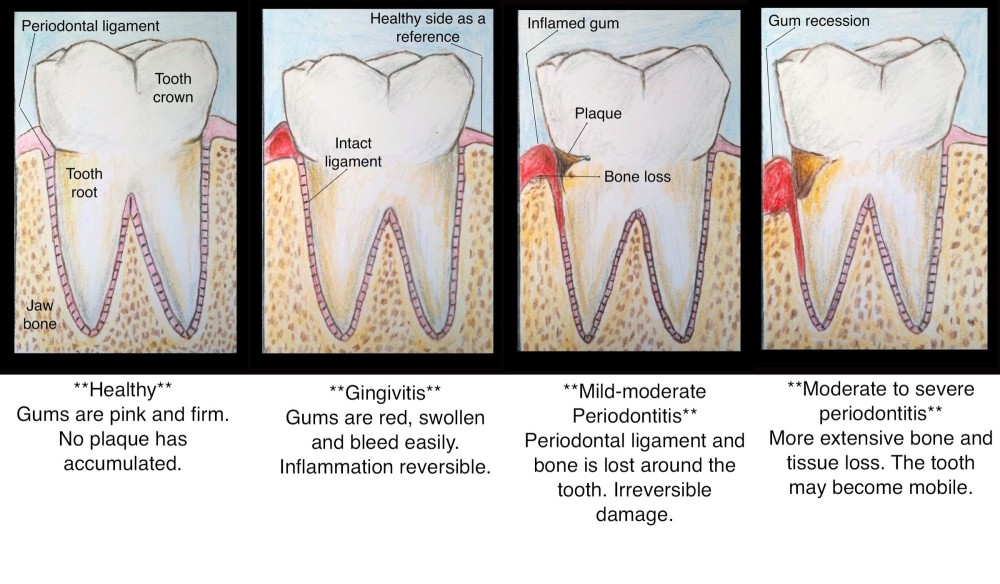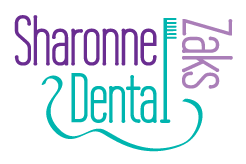gum health
Maintaining healthy gums is one of the most fundamental aspects of my practice and I see many patients with advanced levels of disease for complex work. I am extremely passionate about this area as it is so critical for keeping the teeth and for general health. I teach this subject and love keeping up to date with exciting new research.

Why does gum health matter so much?
Gum disease affects around 70% of people and is the leading cause of tooth loss in the adult population. Gum health is the foundation for success for every other aspect of dentistry; nothing else will work long term unless the gums are healthy and you are building on solid ground eg: fillings dont last as well, teeth can become loose, the bite can collapse and much more if gum disease is present.
In addition to losing the teeth, the presence of gum disease has now been confirmed by research to increase the risk of the following serious general health risks:
- stroke (periodontitis doubles the risk)
- impotence (7x more likely to have this if you have periodontitis)
- heart attack (periodontitis is as predictive as high cholesterol for a heart attack)
- premature birth and low birth weight
- kidney problems (4 x more common in those with periodontitis)
What is gum disease?
Plaque is a buildup of bacteria that collects where the gum meets the tooth in all humans and many animals, regardless of diet. The early plaque contains harmless bacteria, however if they are left to build for more than a couple of days different species grow. These harmful bacteria release irritants and toxins which cause the neighbouring gum to become inflamed. Inflammation involves redness, swelling and often bleeding of the gum when cleaning. There is usually also bad breath. This is called GINGIVITIS and is present in around 20-30% of the Australian population (a new study soon to be released has measured an even higher prevalence). It is completely reversible once the offending plaque is cleaned thoroughly and kept off and usually settles within 10-14 days.
In certain susceptible people (about 25% of the population) this gingivitis progresses to a deeper irreversible level of gum disease called PERIODONTITIS. Plaque is a primary cause but other causes are always involved. These include stress, smoking, dry mouth and anything that hampers the body’s ability to fight plaque bacteria with the immune system (eg diabetes, cancer and chronic illness) Recent research indicates that chronic inflammation is the main driver that continues the process of destruction and treatments currently being developed focus on addressing this inflammation.
In periodontitis, aggressive species of bacteria grow in the plaque that release toxins and irritants; these irreversibly destroy the underlying ligaments that hold the teeth in the jaw bone. The bone, ligaments and gums are all joined so when the ligament is lost the bone is also lost and the gum recedes down. Over time as there is less of this supportive bone and ligament holding the teeth firm, they become loose. This allows them to drift and results in changes in the bite. Often the first sign of periodontitis is a loose tooth/teeth, which is unfortunately a sign of very advanced disease. The end result if untreated is loss of the teeth, hence the importance of screening for it!
The lost ligaments cant regrow but progression of this attachment loss can be stopped by removal of all the plaque from the spaces that form called pockets. These are deep under the gum and inaccessible to a toothbrush. The procedure is called ‘root planing’. Measurements of the severity of the disease are taken initially and over time to monitor its progression and confirm stability. It is a lifelong maintenance issue but the time required to keep the deep plaque off generally gets a lot shorter. It is a real team effort; you keep the plaque off at the surface and I maintain the areas underneath the gum.
Sign of gum disease to look for:
Gum disease can occur at any age, but it is most common among adults and usually presents after age 30. If detected in its early stages (gingivitis), gum disease can be reversed and at any age it can be stopped in its tracks. Pain is not usually a presenting feature of gum disease. Look out for any of the following signs:
-Gums that look puffy, red or swollen.
-Gums that bleed during brushing or flossing and are tender to clean.
-Teeth that look longer because your gums have receded; often they become sensitive.
-Gums that have separated, or pulled away, from your teeth, creating a pocket.
-Changes in the way your teeth fit together when you bite.
-Pus coming from between your teeth and gums.
-Constant bad breath or a bad taste or smell in your mouth.
-Drifting or tilting of teeth over time; often spaces open up or close as teeth move.
Why does the time and cost of cleaning vary so much?
The cost is so variable as the severity of gum disease and amount of plaque present is so different between different people. A small number of people need only 10 minutes of cleaning every 6 months. They have excellent home care and collect little hard plaque (calculus) which requires removal. Most people with reasonable oral hygiene need a 30-45 min routine clean every 6 months to remove any hard and soft plaque.
At the other end of the spectrum people with severe deep gum disease (periodontitis) have a thick coating of deep plaque requiring a series of hour long sessions, (under local anasthetic if required) to retrieve all the inaccessible plaque from under the gum. This is the only way to stop the disease from progressing and remove the risk of tooth loss.
Everyone is unique and falls somewhere in between these extremes with their situation. The same person can be different between different cleans depending on how well they have kept the plaque off in between visits.
The time and complexity of the work required is hugely variable and the cost reflects this spectrum. It is critical to remove all the plaque for the infection to resolve and health to return.
At all sessions the home care routine is discussed and initially demonstrated in great detail. The more the surfaces are kept clean and free of gingivits at home the less time and work is required in the surgery. The aim is to get down to a minimal regular maintenence program and keep the ongoing cost as low as possible. I will discuss the estimate for your mouth before starting and can give you written plan with item numbers to plan rebates if that is helpful.
